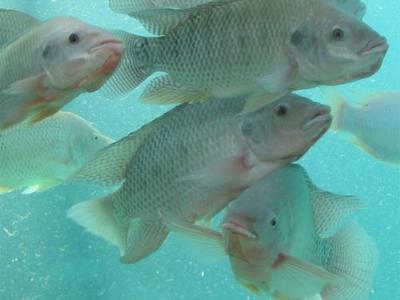Hawaii-based Fish 2.0 awardee tripling tilapia growing capacity

Hoʻoulu Pacific, an aquaponics company focused on spreading the benefits of tilapia farming to low income communities in the Hawaiian Islands and beyond, is at a pivotal point in its history as it accepts its $10,000 in winnings from its third place finish at last week’s Fish 2.0 investment competition.
The company is in the process of tripling the size of its annual yields and revamping its sales strategy in an effort to further its main goal – helping fight obesity and poverty in Hawaii and ultimately other Pacific Islands.
The company uses aquaponics – aquaculture systems that can grow both vegetables and fish in the same system – to grow tilapia for both health and economic reasons. It sets up aquaponics systems at families’ homes, enhancing their access to two important and hard-to-access nutritional commodities – lean protein and vegetables.
At Fish 2.0, Hoʻoulu Pacific was one of 80 companies to apply initially for the multi-phase competition, which was ultimately judged by a panel of five investors who chose their project based on its social impact and business prospects.
“I think it was the combination of our profitability as a company, together with the social benefits we generate for the families we work with. Not only do our operations make money as a whole, families get fish to improve their diets and also get enhanced income,” David Walfish, co-founder of the company, told Undercurrent News.
The families are allowed to keep as much of the food they produce as is needed for every member of the household to get their United States Department of Agriculture (USDA) nutritional needs for protein and vegetables met.
This tangible social benefit, not to mention the fact that it can be measured in the number of people directly impacted, was a benefit to the company during its selection process, in Walfish’s estimation.
But amidst this effort to help families, the need to run a business is not lost. The company is a for-profit entity currently taking investment, although it does accept tax-deductible donations from those interested in contributing.
Live tilapia commands high prices in Hawaii, leaving plenty of room for profits. While the family gets to keep some of the income from the profits, Hoʻoulu Pacific also takes a cut.
After a few years in business, the company is now taking production to the next level by launching a new production model called “coordinated distributed aquaculture” by its co-founder University of Hawaii-West Oahu Assistant Professor, Keith Sakuda. This means the aquaculture production is coordinated by Ho’oulu but distributed to other families; and it is also prompting the installation of larger systems in the homes of the top 50 producers which will ultimately amount to the company more than tripling its total annual production, from a total of 7,000 pounds this year to a projected 24,000 pounds next year.
But the new model will retain the same benefits as the old: combating obesity and diabetes in a region that struggles with these issues; providing extra income to families; and also retaining some benefits that larger consolidated farms don’t have.
“We’re using much smaller, disparate units. Thus, if one unit goes down, we have 49 others that can pick up the slack and production continues without a hitch,” Sakuda said.
The families typically eat 30% to 40% of the production while the company sells the rest to chefs and other vendors in the area; and with the launch of a new grocery coop last week, there is now yet another venue to sell the excess product that families do not need.
The company is aiming to branch out Hawaiian islands beyond its headquarters in Oahu before it branches out to other Pacific Islands in five years’ time
Related news
 Nitrite problem in Freshwater Fish Aquaculture
Nitrite problem in Freshwater Fish Aquaculture Nitrite enters a fish culture system after feed is digested by fish and the excess nitrogen is converted into ammonia, which is then excreted as waste into the